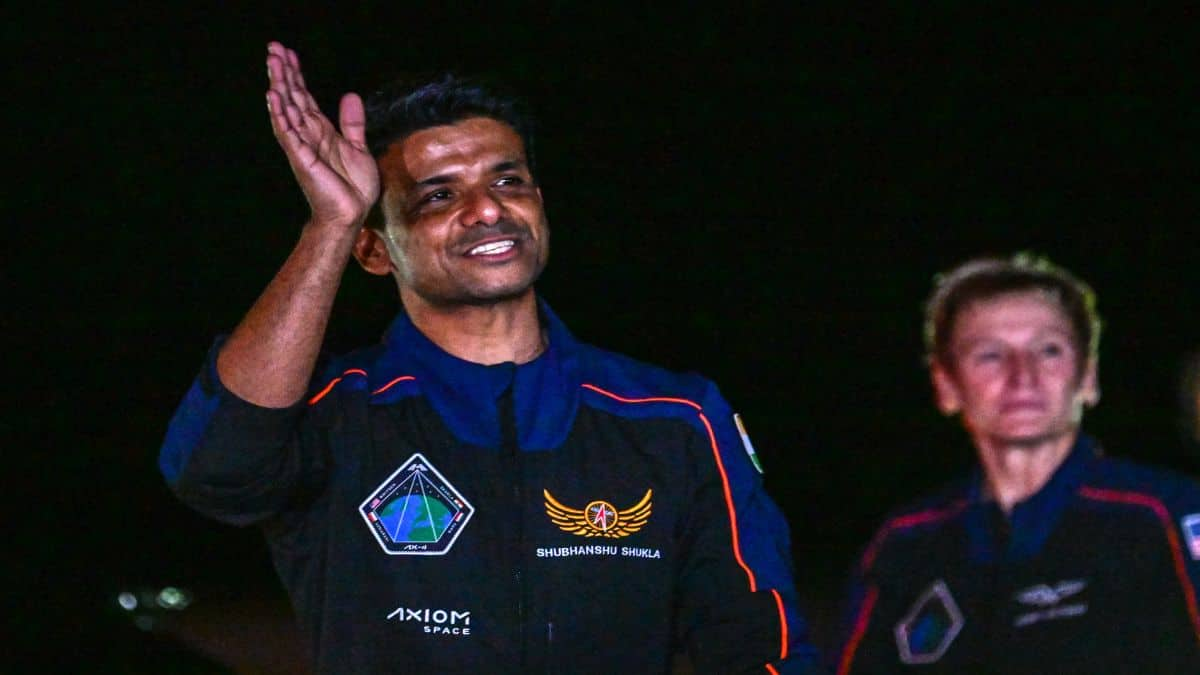

ISRO Chairman V. Narayanan revealed that a potentially "catastrophic failure" was narrowly avoided during the Axiom-4 mission that carried Group Captain Shubhanshu Shukla, along with three other astronauts, to the International Space Station (ISS). The mission, a collaboration between NASA, SpaceX, and ISRO, experienced a significant setback when a liquid oxygen leak was discovered in the Falcon 9 rocket during pre-launch testing.
The ISRO team, present at Kennedy Space Center in the US, detected a crack in the main feed line of the rocket on June 10, a day before the original launch date of June 11. Narayanan stated that ISRO scientists identified the flaw. This discovery prompted Indian scientists to demand a thorough probe into the issue. According to Narayanan, SpaceX took the liquid oxygen leak "a little lightly" and didn't share key information, citing confidentiality. He added that the US space firm didn't share key information, citing confidentiality. When ISRO officials inquired about the leak, SpaceX couldn't identify the location and wouldn't reveal the leak rate.
Narayanan highlighted the critical role of the ISRO team's expertise in identifying the severity of the situation. With 40 years of experience working on liquid oxygen-powered engines, the ISRO team recognized the potential for disaster if the launch proceeded with the crack. "If the rocket lifts off with the crack, it will give away the moment it lifts off due to the vibrations. Once it gives away, it is a catastrophe, nothing else," Narayanan stated.
The ISRO team insisted on a complete correction, which was eventually carried out by SpaceX. The launch was postponed from June 11 to June 25 to allow for the necessary repairs. According to Narayanan, the leak was increasing continuously during the test and data was available with ISRO. William Gerstenmaier, Vice President for Build and Flight Reliability at SpaceX, had mentioned the leak during a pre-launch briefing on June 9, but didn't indicate it would be a constraint to launch.
Shukla's mission marked a historic moment as he became the first ISRO astronaut to visit the ISS and the second Indian to travel to space, following Rakesh Sharma's mission in 1984. He participated in over 60 experiments and 20 outreach sessions during his 18 days on the ISS.
Addressing a press conference, Shukla acknowledged the government and ISRO's role in making the mission possible. He described his time on the ISS as "very different from what you learn on the ground. It was an unbelievable experience". He also said that even today, from space, India looks the most beautiful in the world.
Narayanan emphasized the significance of ISRO's role in ensuring the mission's safety. "If the rocket had taken off (with the leak), it would have been a catastrophic failure. Based on the insistence of Indians, the Indian education system, the training of ISRO, the rocket was corrected," he said.
The successful completion of the Axiom-4 mission is considered a major milestone for India's human spaceflight program. The mission is believed to provide valuable information for ISRO's upcoming Gaganyaan mission, scheduled for mid-2027. Shukla's experience as the mission pilot aboard the Crew Dragon spacecraft is expected to be crucial for Gaganyaan.